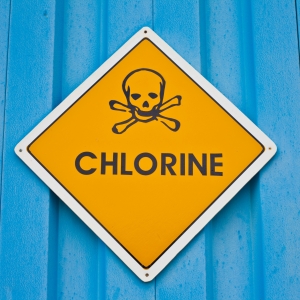In the modern world, access to safe and clean water is fundamental to public health and overall well-being. In the early 1900’s, Chlorination emerged as a water treatment process that revolutionized how we purify and disinfect water on a large scale. The impact of chlorination on society has been profound, drastically reducing waterborne diseases and saving countless lives. In this blog, we will dive into the science behind chlorination, understanding how this ubiquitous disinfection method works to safeguard our water supply.
The Need for Water Treatment
Before the advent of water treatment, communities were plagued by waterborne illnesses such as cholera, E.coli, typhoid and dysentery. These illnesses could and did spread rapidly, devastating entire populations. To address these public health concerns, two pioneering individuals developed the first water treatment plant to establish the delivery of safe drinking water to homes and businesses.

Chlorination is a Game-Changing Discovery
In 1908, a monumental breakthrough occurred when bacteriologist John L. Leal and engineer George W. Fuller introduced the practice of chlorination at the Jersey City Water Supply Company’s Boonton Reservoir in Jersey City, New Jersey, in the first large-scale chlorination of a public drinking water supply in the United States. Initially met with opposition from city officials and the public based on adding “poisonous” chemicals to the drinking water supply, Leal and Fuller persisted, convinced of the potential benefits to the public.
This marked the beginning of an era that would significantly alter the landscape of water purification and serves today as the basis for water treatment purification. By the 1920s, chlorination was a well-established primary means of disinfecting drinking water nationwide.
Today, millions of Americans have access to safe, affordable and abundant drinking water filtered and safely treated with chemical disinfectants due to Leal’s and Fuller’s pioneering engineering triumph.
Mechanism of Chlorination
Chlorination involves the addition of chlorine, either in the form of chlorine gas, sodium hypochlorite (liquid bleach), or calcium hypochlorite (solid granules), to water sources. Upon introduction, the chlorine reacts with various organic and inorganic substances in the water.
Formation of Hypochlorous Acid (HOCl):
Chlorine gas reacts with water (H2O) to form hypochlorous acid (HOCl) and hydrochloric acid (HCl). Hypochlorous acid is the active and most effective form of chlorine for disinfection.
Cl2 + H2O → HOCl + HCl
Disinfection Process:
Hypochlorous acid acts as a powerful disinfectant, attacking and destroying harmful microorganisms by penetrating their cell walls and interfering with enzymatic processes essential for survival. This disrupts the microorganisms’ ability to reproduce and spread, effectively neutralizing the threat of waterborne pathogens.
Chlorine Residual:
Maintaining a chlorine residual in the treated water is crucial to ensure continuous disinfection throughout the distribution system. A chlorine residual refers to the small amount of chlorine that remains in the water after the initial treatment. This residual concentration is a protective barrier against potential contamination during water distribution.
Challenges and Concerns
While chlorination has been a transformative and life-saving water treatment technique, some challenges and concerns are associated with its use.
Disinfection Byproducts (DBPs)
The reaction of chlorine with organic matter in water can lead to the formation of disinfection byproducts (DBPs), such as trihalomethanes (THMs) and haloacetic acids (HAAs). Some DBPs have been linked to potential health risks, including an increased risk of cancer. To address this, water treatment facilities have implemented strategies to minimize DBP formation.
Chlorine Resistance
In recent years, certain microorganisms have shown varying degrees of resistance to chlorine, making it necessary to explore alternative disinfection methods or combine chlorination with other treatment processes.
Conclusion
The science behind chlorination has revolutionized public health by providing access to safe and clean water on a large scale. The disinfection power of chlorine has proven pivotal in reducing waterborne diseases and preventing epidemics. Although challenges persist, ongoing research and advancements in water treatment technology will continue to refine the chlorination process, ensuring that future generations enjoy the benefits of safe and potable water.
Visit rk-water.com for more information.